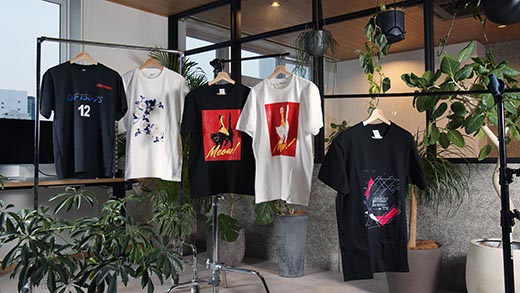Direct-to-Film Technology – Shaking Things Up in Digital Textile Printing

Direct-to film technology allows for the creation of premium transfer designs, whether it is for custom merchandising or sportswear.
Marc Verbeem, Supervisor Product Management, Mimaki Europe
Direct-to film technology has a significant impact on apparel decoration in the printing industry. The process is simple, affordable, and allows for vibrant, dynamic designs in full colour with a durable finish. This allows digital print service provider (PSP) to increase their customer base, offer more products in the textile sector, and expand their fabric printing capabilities. Mimaki, as the textile industry grows, recognised the need for an innovative solution that would take the process to a new level. This was combined with the manufacturer support Mimaki is known for.
Direct-to film vs. screen printing
Direct-to film printing is a process that digitally prints directly onto a transfer sheet. The hot-melt is then heated and applied to the fabric. After the transfer sheet has been cured and dried it can be heat pressed on a wide range of fabrics. It is ideal for creating premium transfers for custom merchandise, sportswear and other promotional textile applications. The screen printing plate creation is much more time-consuming than the traditional screen printing methods. Not only this, but the process does not meet direct-to-film’s ability to produce vivid colours and quality details such as shapes, lettering, and motifs often sought after in the promotional and merchandising space for bespoke textiles.
Why DTF?
Mimaki is excited to be entering a completely new market segment with the direct-to film technology. Why did Mimaki choose this path? One reason was that we were confident we could offer the best solution on the market, thanks to our core technologies and our portfolio of digital textile printers. A stable and reliable direct-to film printing solution is also needed by the market. For a print process as complex as this, it is important to have a partner who can provide reliable aftercare. Mimaki’s reputation is synonymous with support, which is what direct-to-film customers can expect every step of the way.
The Mimaki TxF150-75″
Mimaki’s first direct-to-film inkjet printer is the TxF150-75, a fitting extension to the 150 series, with a maximum printing width of 80cm. Offering a stable printing plotter, the model’s built-in ink circulation system and degassed ink pack are resolutions to common direct-to-film challenges such as poor ink ejection and white ink clogging. The new printer is equipped with core Mimaki functions such as the NCU (Nozzle Control Unit) and NRS system (Nozzle Recovery System), which ensures stable, uninterrupted production. Operating in harmony with the textile printer itself is Mimaki’s ECO PASSPORT by OEKO-TEX® certified water-based pigment textile inks, formulated especially for the TxF150-75. Coupled with Mimaki’s RasterLink7 RIP software, users are offered end-to-end oversight and efficiency from creative design to final product.
In addition, and in line with Mimaki’s collaborative approach to meeting customer needs, Adkins has developed an 80cm wide powder shaker cure unit to complete this ‘A brand’ direct-to-film Printing solution. The 80cm-wide printer and postprocessing unit allows customers to print larger garments, with less waste, faster production times and lower costs.
Mimaki TxF150 75 represents a great opportunity for customers in the apparel decorated sector, or those who want to enter the digital textile printing industry.